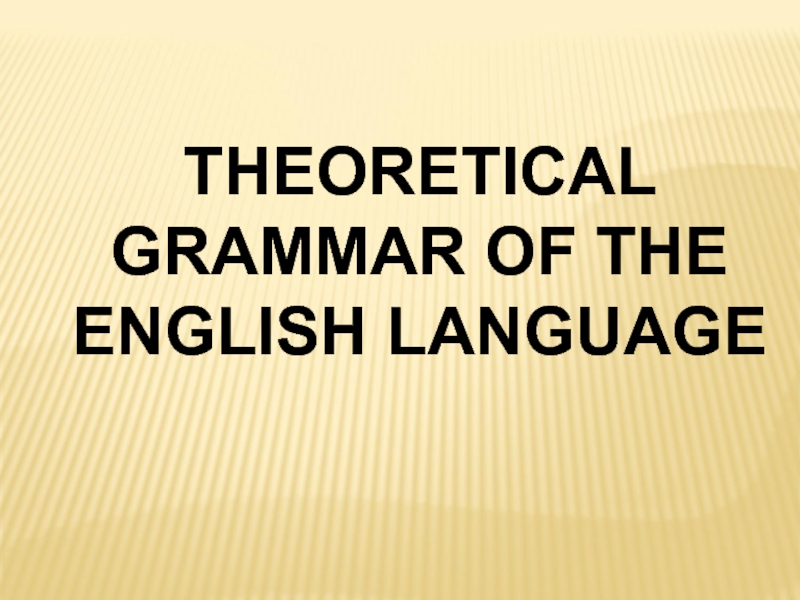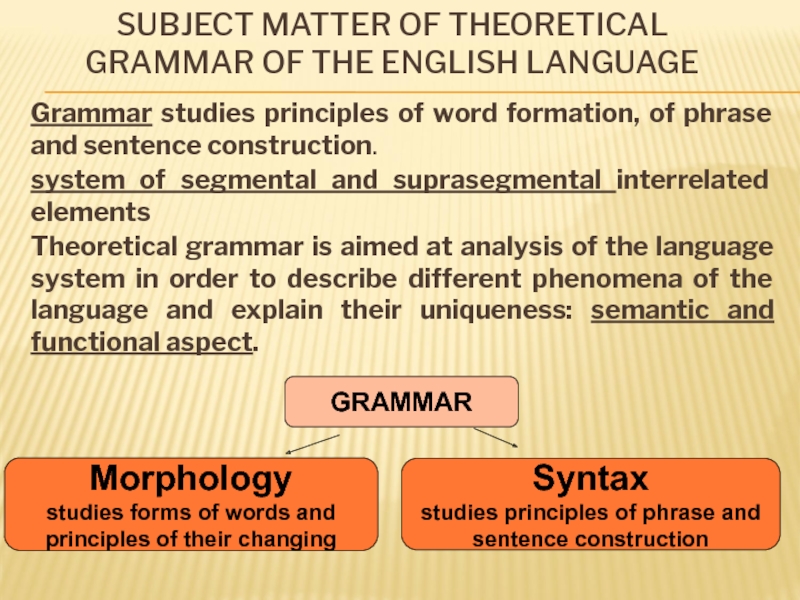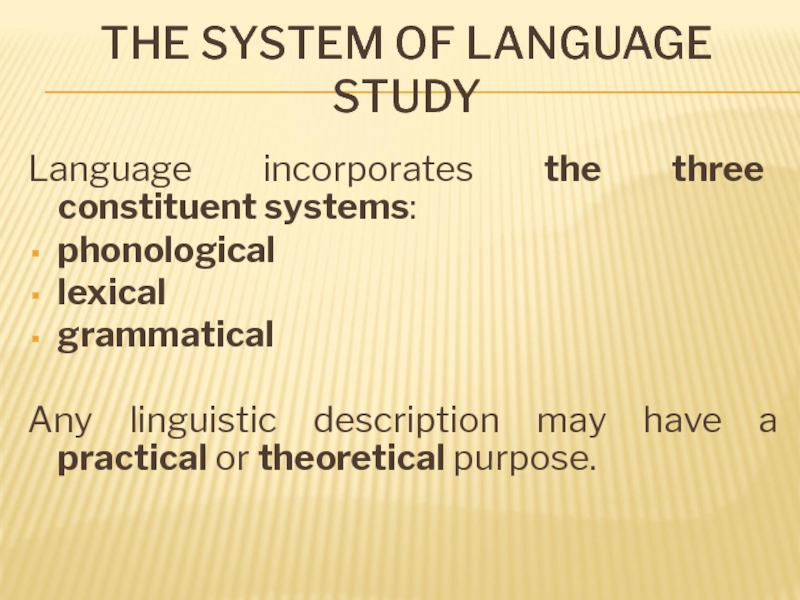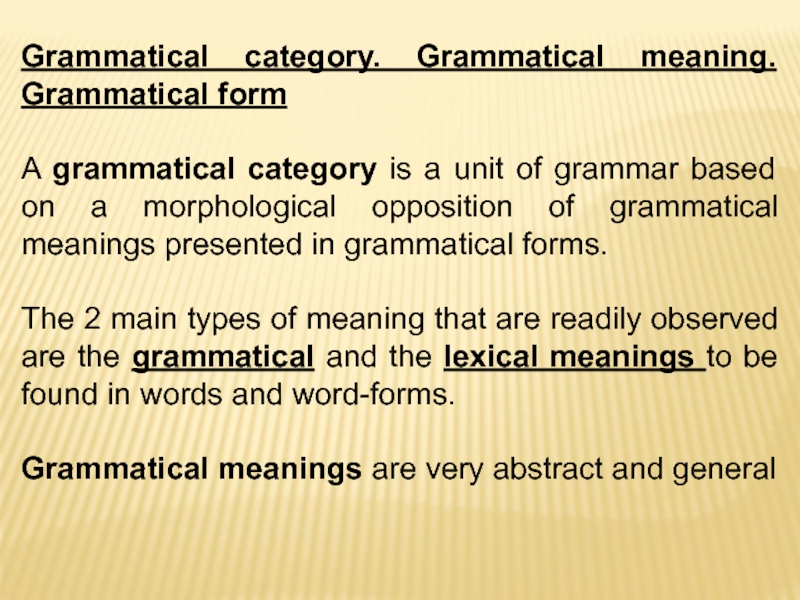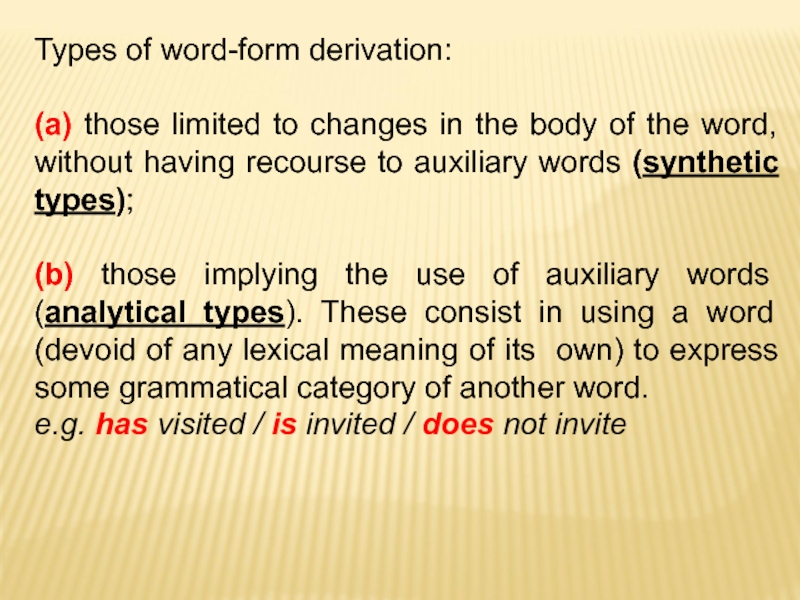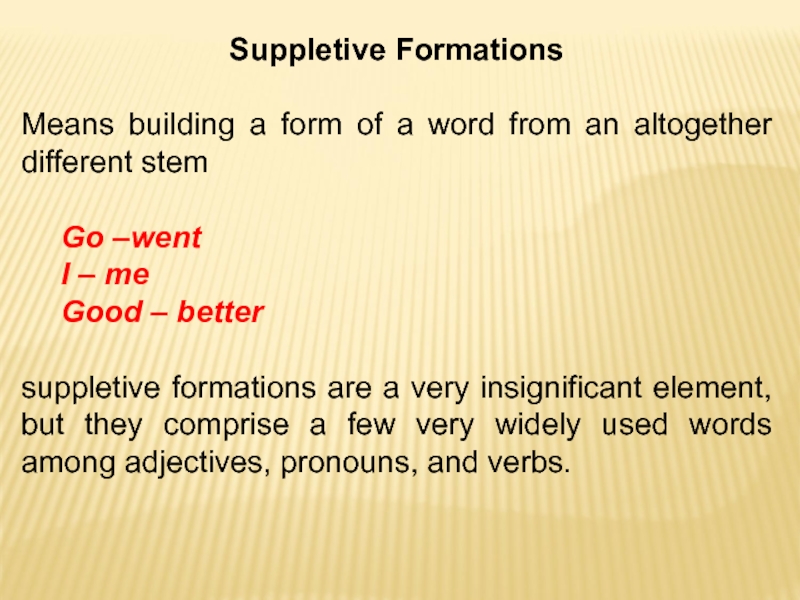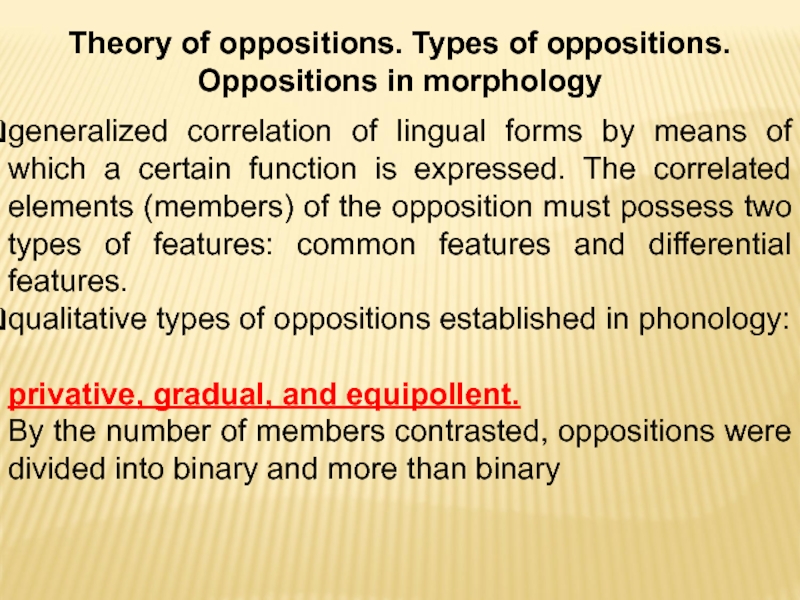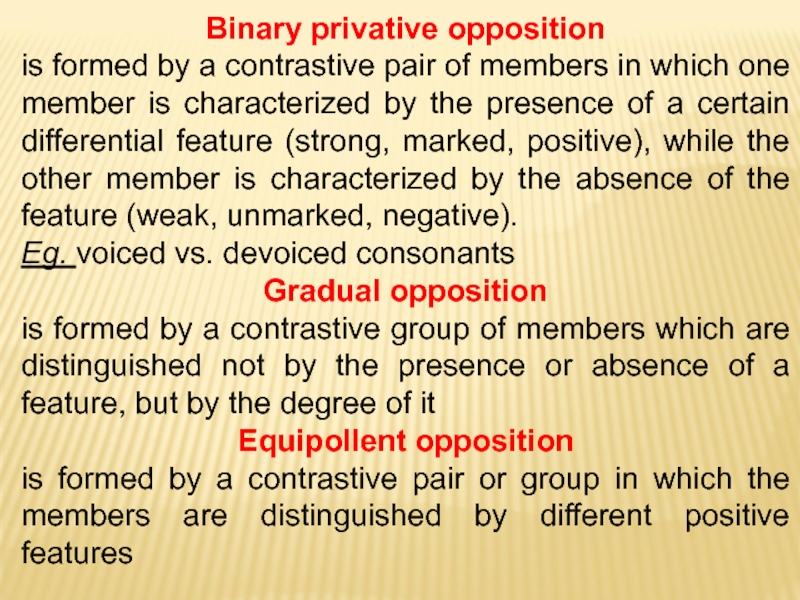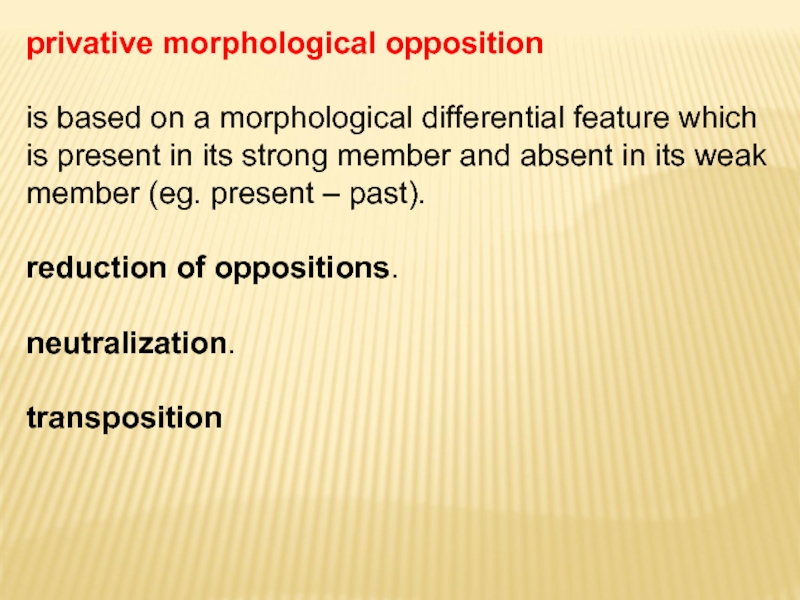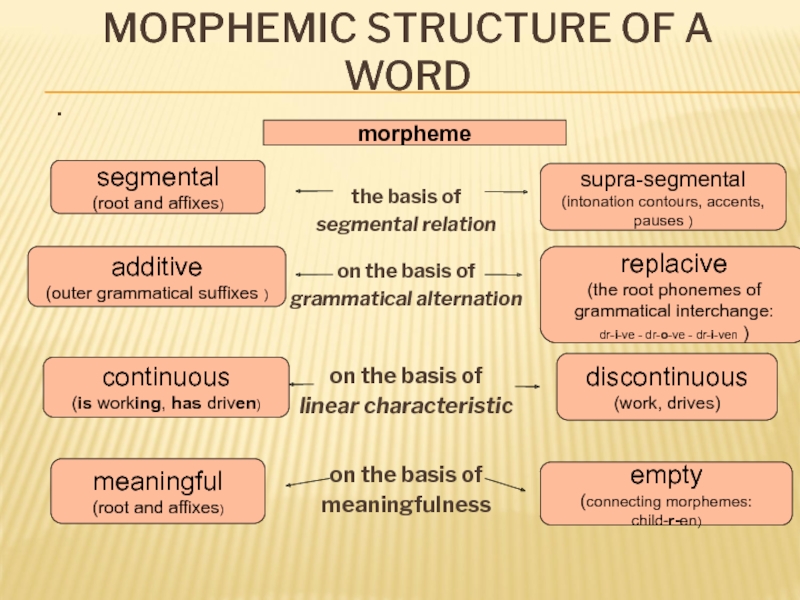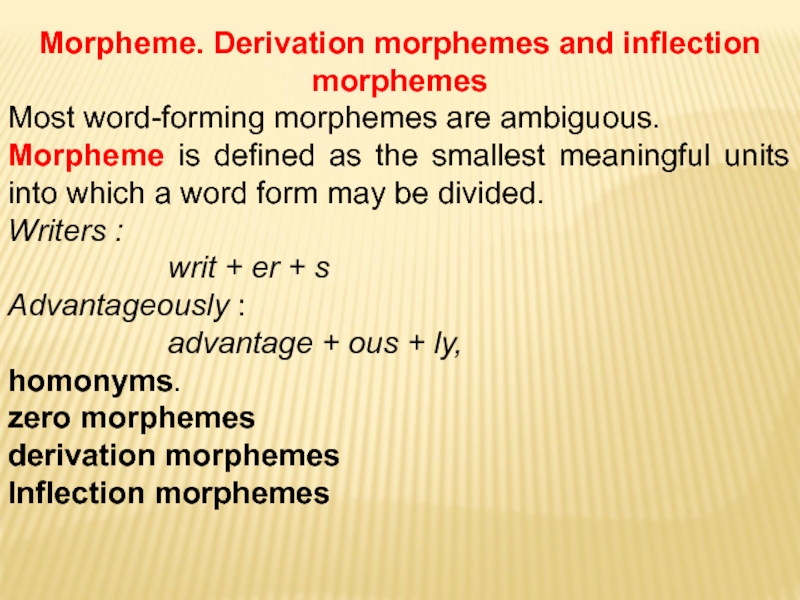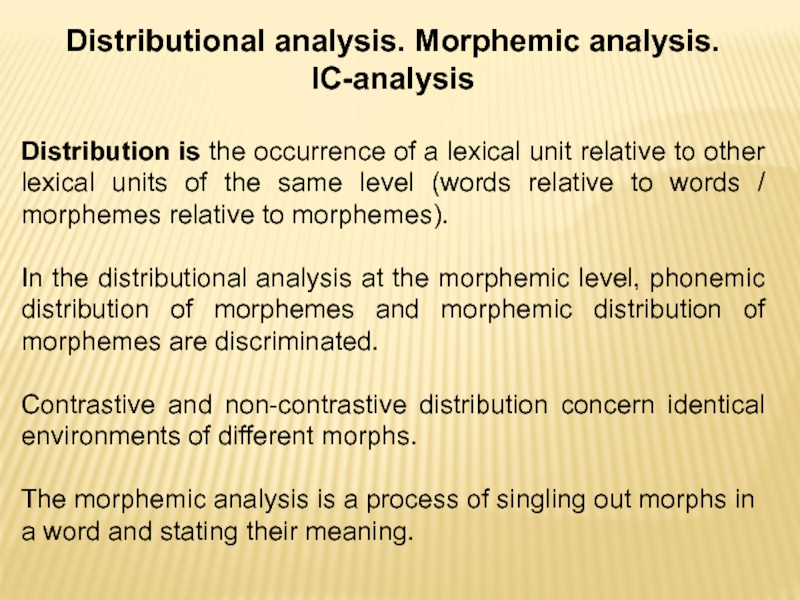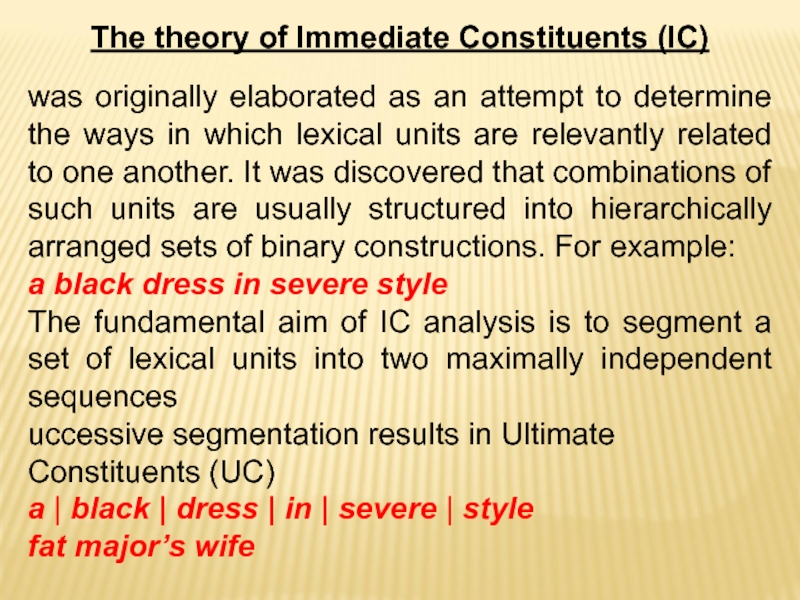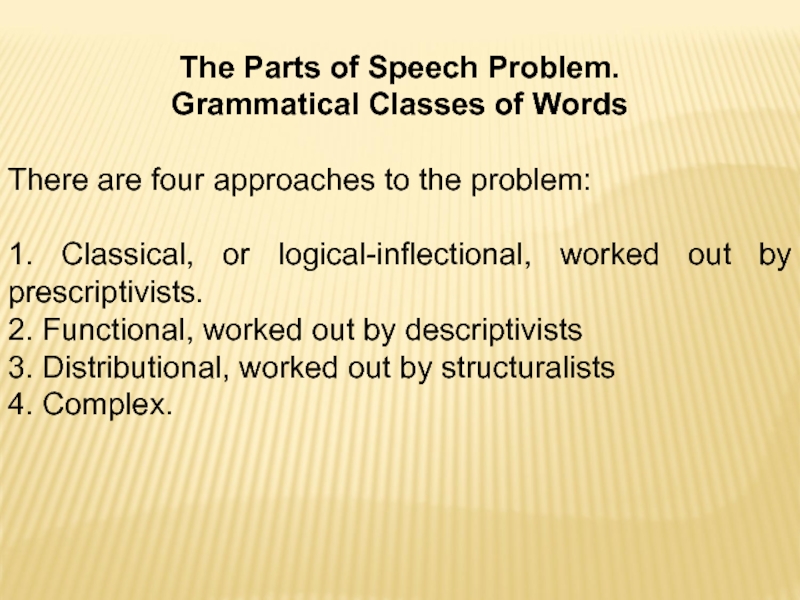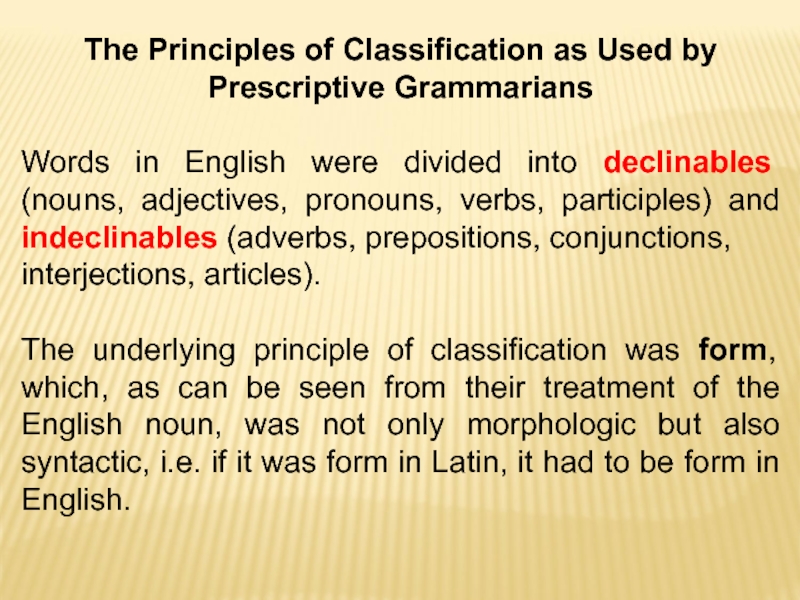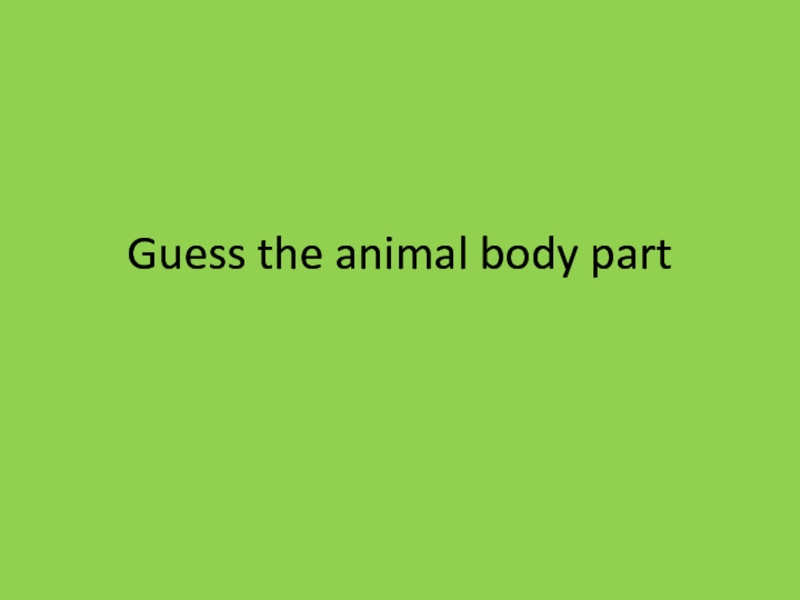- Главная
- Разное
- Дизайн
- Бизнес и предпринимательство
- Аналитика
- Образование
- Развлечения
- Красота и здоровье
- Финансы
- Государство
- Путешествия
- Спорт
- Недвижимость
- Армия
- Графика
- Культурология
- Еда и кулинария
- Лингвистика
- Английский язык
- Астрономия
- Алгебра
- Биология
- География
- Детские презентации
- Информатика
- История
- Литература
- Маркетинг
- Математика
- Медицина
- Менеджмент
- Музыка
- МХК
- Немецкий язык
- ОБЖ
- Обществознание
- Окружающий мир
- Педагогика
- Русский язык
- Технология
- Физика
- Философия
- Химия
- Шаблоны, картинки для презентаций
- Экология
- Экономика
- Юриспруденция
Theoretical grammar of the english language презентация
Содержание
- 1. Theoretical grammar of the english language
- 2. Grammar studies principles of word formation, of
- 3. THE SYSTEM OF LANGUAGE STUDY Language incorporates
- 4. Grammatical category. Grammatical meaning. Grammatical form
- 5. Grammatical forms can be morphemes, synthetic forms,
- 6. Types of word-form derivation: (a) those
- 7. Suppletive Formations Means building a form
- 8. Theory of oppositions. Types of oppositions. Oppositions
- 9. Binary privative opposition is formed by
- 10. privative morphological opposition is based on
- 11. MORPHEMIC STRUCTURE OF A WORD .
- 12. Morpheme. Derivation morphemes and inflection morphemes Most
- 13. Distributional analysis. Morphemic analysis. IC-analysis Distribution
- 14. The theory of Immediate Constituents (IC)
- 15. The Parts of Speech Problem.
- 16. The Principles of Classification as Used by
Слайд 2Grammar studies principles of word formation, of phrase and sentence construction.
system of segmental and suprasegmental interrelated elements
Theoretical grammar is aimed at analysis of the language system in order to describe different phenomena of the language and explain their uniqueness: semantic and functional aspect.
Morphology
studies forms of words and
principles of their changing
Syntax
studies principles of phrase and
sentence construction
SUBJECT MATTER OF THEORETICAL GRAMMAR OF THE ENGLISH LANGUAGE
GRAMMAR
Слайд 3THE SYSTEM OF LANGUAGE STUDY
Language incorporates the three constituent systems:
phonological
lexical
grammatical
Any linguistic description may have a practical or theoretical purpose.
Слайд 4Grammatical category. Grammatical meaning. Grammatical form
A grammatical category is a unit
The 2 main types of meaning that are readily observed are the grammatical and the lexical meanings to be found in words and word-forms.
Grammatical meanings are very abstract and general
Слайд 5Grammatical forms can be morphemes, synthetic forms, and grammatical word combinations.
Synthetic
In analytical forms there two or more words in which at least one element is an auxiliary.
The grammatical category of gender is practically lost in English e.g.
“waiter vs. waitress”
That distinction is not universal enough to build up a grammatical category
book and books
-s is a form-building morpheme that builds a grammatical form
Слайд 6Types of word-form derivation:
(a) those limited to changes in the body
(b) those implying the use of auxiliary words (analytical types). These consist in using a word (devoid of any lexical meaning of its own) to express some grammatical category of another word.
e.g. has visited / is invited / does not invite
Слайд 7Suppletive Formations
Means building a form of a word from an altogether
Go –went
I – me
Good – better
suppletive formations are a very insignificant element, but they comprise a few very widely used words among adjectives, pronouns, and verbs.
Слайд 8Theory of oppositions. Types of oppositions. Oppositions in morphology
generalized correlation of
qualitative types of oppositions established in phonology:
privative, gradual, and equipollent.
By the number of members contrasted, oppositions were divided into binary and more than binary
Слайд 9Binary privative opposition
is formed by a contrastive pair of members
Eg. voiced vs. devoiced consonants
Gradual opposition
is formed by a contrastive group of members which are distinguished not by the presence or absence of a feature, but by the degree of it
Equipollent opposition
is formed by a contrastive pair or group in which the members are distinguished by different positive features
Слайд 10privative morphological opposition
is based on a morphological differential feature which is
reduction of oppositions.
neutralization.
transposition
Слайд 11MORPHEMIC STRUCTURE OF A WORD
.
the basis of
segmental relation
on the
grammatical alternation
on the basis of
linear characteristic
on the basis of
meaningfulness
morpheme
segmental
(root and affixes)
supra-segmental
(intonation contours, accents, pauses )
additive
(outer grammatical suffixes )
replacive
(the root phonemes of
grammatical interchange:
dr-i-ve - dr-o-ve - dr-i-ven )
continuous
(is working, has driven)
meaningful
(root and affixes)
discontinuous
(work, drives)
empty
(connecting morphemes: child-r-en)
Слайд 12Morpheme. Derivation morphemes and inflection morphemes
Most word-forming morphemes are ambiguous.
Morpheme is
Writers :
writ + er + s
Advantageously :
advantage + ous + ly,
homonyms.
zero morphemes
derivation morphemes
Inflection morphemes
Слайд 13Distributional analysis. Morphemic analysis. IC-analysis
Distribution is the occurrence of a lexical
In the distributional analysis at the morphemic level, phonemic distribution of morphemes and morphemic distribution of morphemes are discriminated.
Contrastive and non-contrastive distribution concern identical environments of different morphs.
The morphemic analysis is a process of singling out morphs in a word and stating their meaning.
Слайд 14The theory of Immediate Constituents (IC)
was originally elaborated as an
a black dress in severe style
The fundamental aim of IC analysis is to segment a set of lexical units into two maximally independent sequences
uccessive segmentation results in Ultimate
Constituents (UC)
a | black | dress | in | severe | style
fat major’s wife
Слайд 15
The Parts of Speech Problem.
Grammatical Classes of Words
There are four
1. Classical, or logical-inflectional, worked out by prescriptivists.
2. Functional, worked out by descriptivists
3. Distributional, worked out by structuralists
4. Complex.
Слайд 16The Principles of Classification as Used by Prescriptive Grammarians
Words in English
interjections, articles).
The underlying principle of classification was form, which, as can be seen from their treatment of the English noun, was not only morphologic but also syntactic, i.e. if it was form in Latin, it had to be form in English.
